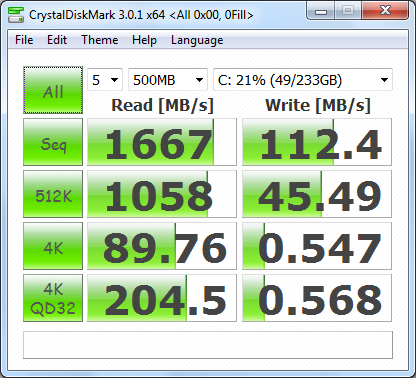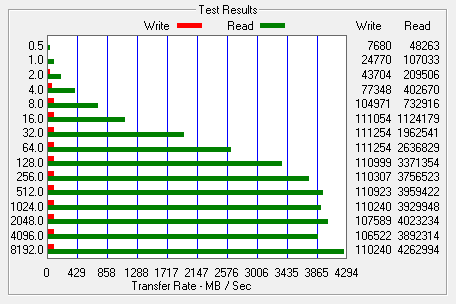The test system used in this review was an HP 8200 Elite. The computer came equipped with an Intel Core i5-2400 CPU, 4GB of DDR3 1333MHz memory, Seagate Barracuda 7200.12 ST3250312AS 250GB SATA 6 Gb/s hard drive, NVIDIA Quadro FX580 512MB PCIe graphics card and an Intel 82579-LM gigabit network card. For the operating system, I installed a fresh copy of Windows 7 Enterprise.
To test the performance of the SanDisk ReadyCache, I ran a series of benchmarks using CrystalDiskMark 3.0.1, ATTO Disk Benchmark 2.46, Iometer, BootRacer and PCMark Vantage.
CrystalDiskMark 3.0.1:
First, I ran a few quick tests using CrystalDiskMark. This benchmark tool measures the performance of a storage device by testing its sequential read and write speeds as well as its random read and write speeds using blocks 512K and 4K in size.
By itself, the Seagate Barracuda 7200.12 was able to read and write at a little more than 100 MB/s. With the ReadyCache enabled, the read speed increased by more than 337 MB/s. The write speed also went up a bit. However, the performance increase was a mere 8 MB/s.
The ReadyCache performed even better with highly compressible 0x00 (0 Fill) data. This time around, it reached a maximum read speed of 1667 MB/s.
ATTO Disk Benchmark 2.46:
Next, I used ATTO Disk Benchmark to test the ReadyCache's sequential read and write speeds. The tests are run using blocks ranging in size from 0.5KB to 8192KB and the total length set to 256MB.
ATTO uses highly compressible data which the ReadyCache was able to read back at speeds in excess of 4260 MB/s. Unfortunately, it had little to no impact on the writing speeds, which topped out at 111 MB/s.
Iometer:
I also ran a series of tests using Iometer. This tool can be configured to benchmark a number of things. In this case, I used it to measure the SanDisk ReadyCache's read and write speeds and the number of operations per second. The tests were run using both repeating and random bytes and a queue depth of 3.
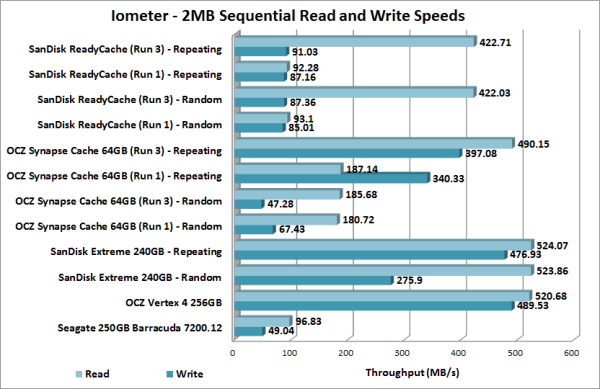
The ReadyCache's performance was very similar to what we saw in our other tests. By the third run, our test system was able to read at 422 MB/s and write at about 90 MB/s.
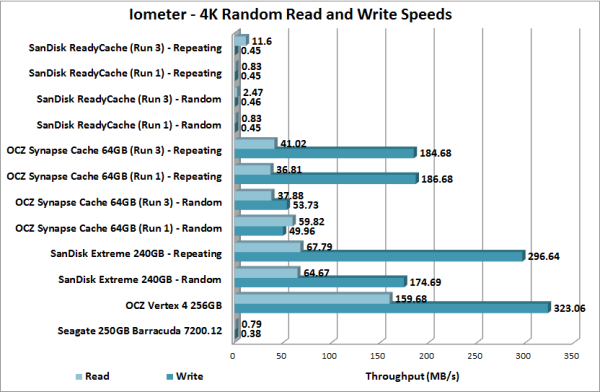
The ReadyCache really didn't have much of an effect on the system's random read and write performance. By the third run, it was able to read at 11.6 MB/s and write at 0.45 MB/s with repeating data.
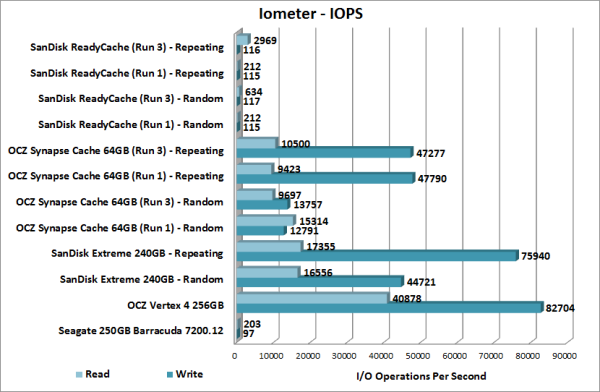
Once again, you can see that random reads and writes are not one of the ReadyCache's strong points. By the third run, it reached 2969 IOPS when doing a random read and a mere 116 IOPS when doing a random write with repeating data.




